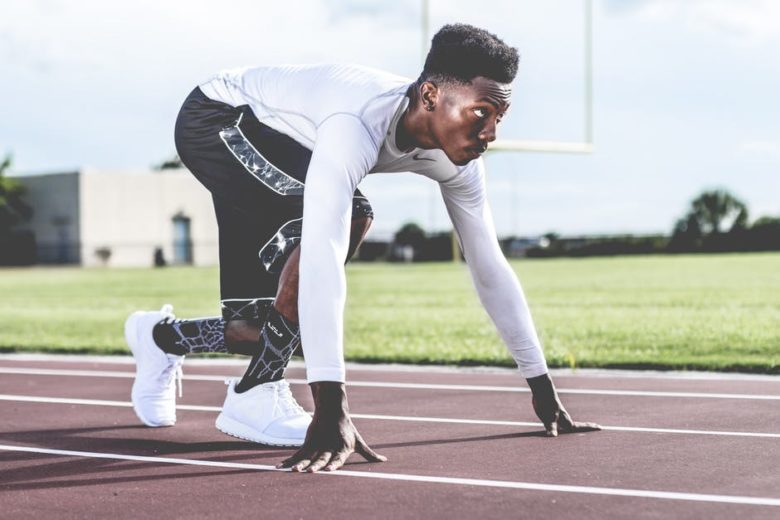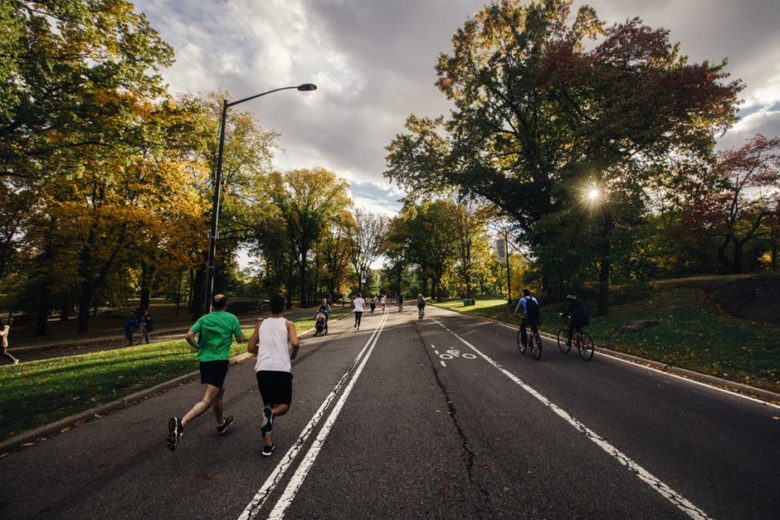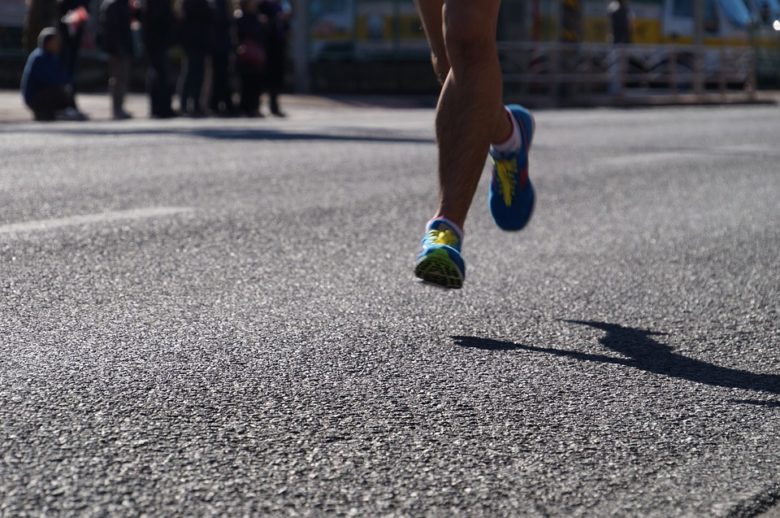Running is awesome. There’s nothing quite like that feeling of getting yourself from A to B using only your own energy and determination. What’s more, there’s a certain sense of accomplishment in getting faster and in getting to point B quicker than you did last time. However if you’ve read my article on ‘How to run further,’ then you’ll know that improving at running isn’t quite so simple and that it takes careful planning and preparation to get better without getting injured.
So stick around for the next few minutes, and I’ll walk you through exactly how to get faster without getting injured.

Step 1: Know what you’re training for and keep it specific
Your body has three main energy systems, the aerobic, the lactic and the anaerobic (also known as the creatine phosphate system).
- Your aerobic system is your body producing energy using oxygen and stored fats. Think long distance running at a nice, controlled pace.
- Your lactic system is similar, but your body is reaching its limit for oxygen usage and starts to build up lactic acid, also known as the ‘burn’ in the gym. For running, think of 800 to 1500 metre races.
- Your Creatine phosphate system uses no oxygen at all. Instead, it uses energy stored in your muscles. For running, think of 100 and 200-metre sprints.
Training in one system doesn’t necessarily lead to significant improvements in the others, so if you’re looking to improve your marathon time sprints aren’t going to help. Instead, you’ll need to think about what distance it is that you want to improve and focus your training on the matching energy system.
Step 2: Find your pace and find a way to track it whilst running
Once you’ve identified your distance and energy system, it’s time to measure your pace. For the sake of argument let’s say you’re running a 5k in 40 minutes. This means that you’re running 1k every 8 minutes on average.
The next time you run, if you have a phone or fitness device, you can check your progress and make sure that you’re keeping the same pace throughout your run. If you don’t have a fitness device, you can use a basic road or land markings along with a simple wristwatch. You can also use mapmyrun.com to record your time and distance.
Step 3: Try pace increases over slightly longer distances each week
Now, if you’re running 5k in 40 minutes, you’re not suddenly going to run it in 30 minutes the next week. Plus even if you did manage it, you’d be risking injury by pushing your body too hard too soon.
The trick to long term improvement is to use small increases over time, week after week. When you’re trying to improve your speed the best way to do this is to use short bursts of increased pace during your regular runs. So if you were running 5 kilometres, each taking 8 minutes, you could try running 4k at your 8-minute pace, then running the last 1k at a new, faster pace of 7 minutes. Make sense?
Here’s how your run might look over 9 weeks:
- Week 1 – 4k at 8 minute per kilometre, 1k at 7 minutes per kilometre
- Week 2 – 3.5 at 8p/km, 1.5k at 7p/km
- Week 3 – 3 at 8p/km, 2 at 7p/km
- Week 4 – 2.5 at 8p/km, 2.5 at 7p/km
- Week 5 – 2 at 8p/km, 3 at 7p/km
- Week 6 – 1.5 at 8p/km, 3.5 at 7p/km
- Week 7 – 1 at 8p/km, 4 at 7p/km
- Week 8 – 0.5 at 8p/km, 4.5 at 7p/km
- Week 9 – All 5km at your new 7 minutes per kilometre pace.
At week 9 you would now be running 5k in 35 minutes instead of 40 minutes, which is a massive improvement!
Now although this example is based on a 5k, the exact same principles work for marathons and for sprints. Hence, you need to be specific with your training, monitor your pace and increase it a little bit each week.

Hopefully, I’ve given you an idea as to how you can improve your running speed whilst minimising your risk of injury. No tricks, no secrets, just hard work, effort and a sensible plan.
Good Luck! Now go get running!



I will have to define step – 1 to get started. Such an informative post.
So glad you liked it, Anu! Running is an excellent activity!
These are certainly great tips, necessary too. Thanks for sharing.
Funmi x
http://www.funmialabi.co.uk
The tips are quite useful, Funmi! Great you like them! 😉
I am one of those people who just cannot run! But I do walk a lot if possible 🙂
Walking is also a great way to stay fit, Tandy! 🙂
You’ve got a great blog dedicated to fitness here….oh to be young and running again! I do however, still walk, exercise and do yoga. 🙂
Yoga is a great way of being active, Loretta!
Excellent tips! I have definitely tried to gradually increase my speed slowly and find that’s working – increase a little bit here and a little bit there and before I know it I’m running faster than I was a month ago ?
You should definitely try it slowly and listen to your body, Dawn! 🙂
Wonderful article. I like the building step by step approach!
Step by step is the best approach to anything, Patrick! 🙂
Agness, I’m the slowest runner on earth! Seriously, I could walk faster. But you’ve convinced me I could actually get faster! Thanks, girl ?
You’re welcome, Kelsie! My pleasure 😉
Very Informative post. Great tips. Thanks for sharing. ?
I am so glad you liked it, Rutu!
I love this! I tend to be a long and slow sort of runner, so I get discouraged when I don’t see my times go down quickly enough. This is such a great reminder that it takes time to see progress!
Achieving the aim required dedication and determination, Tracy! I hope you stay motivated!
Very informative post. I don’t run fast, but I’d like to give it a try. Thanks for the tips and inspiration 🙂
I really hope that these tips will help you start running faster, Melissa!